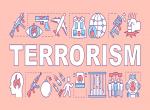When serial blasts rocked Mahabodhi temple at Bodh Gaya on 07 July 2013, it was for the first time that a Buddhist holy spot was targeted in India. Ten of the 13 bombs planted at the temple were indeed of low intensity, but their psychological impact was huge. Though no group or individual has claimed responsibility so far, fingers are being pointed at four different directions as possible perpetrators.
Was there a political motive? Congress General Secretary Digvijaya Singh tried to connect the timing of the blasts with Gujarat Chief Minister and BJP leader Narendra Modi’s advice to the party workers to teach Bihar Chief Minister Nitish Kumar “a lesson”. What Digvijay Singh was trying to suggest was that the BJP would be interested in projecting Bihar’s law and order situation in a poor light, especially after JDU-BJP split in the state. The speculation has no value other than to gain cheap publicity.
There were also conjectures on the possible involvement of Tamil extremist groups to express their resentment against Sinhala Buddhists for the latter’s treatment towards their ethnic brethren in Sri Lanka. Two Buddhist monks were attacked in Tamil Nadu in March this year; and, in January 2011, the Mahabodhi Society Temple in Chennai was attacked. But, the Tamil groups involved in those attacks clearly lack the capability of carrying out terror attacks, that too using bombs. They have no wherewithal to strike a target more than 2000 kilometers away.
Were Maoists behind the attacks? Gaya is indeed a hotbed of the Maoists, but when it comes to a possible motive, it is difficult to establish their involvement. Mahabodhi temple was neither a state symbol nor a camp for security/police forces. Maoists would not bother otherwise. There were doubts whether they did the attack on behalf of any jihadist organisation. There are opportunistic linkages between Maoists and jihadist terror groups like Lashkar-e-Toiba (LeT). However, such linkages have so far not been so deep as to extend to the outsourcing of terror attacks.
The final possibility is the involvement of the Indian Mujahideen (IM). There have been alerts from the Intelligence Bureau over Mahabodi Temple as one of the prime targets of terror groups like the Indian Mujahideen. The Delhi Police had also sounded out Bodhgaya Temple as one of the targets based on interrogation of IM militants in its custody. The National Investigation Agency (NIA) that has been investigating the case has established IM hands in the blasts. What does the IM have against a Buddhist target? Two broad motives can be established.
The primary aim was to avenge “atrocities” against Muslims in Myanmar by the Buddhist majority. For quite some time, Pakistan-based terror groups like the LeT and Jaish-e-Mohammed (JeM) and Bangladesh-based Harkat-ul-Jihad al-Islami (HuJI) and Jamaat-e-Mujahideen of Bangladesh (JMB) have been trying to establish a firm foothold in Mayanmar, especially in the Muslim-inhabited Arakan area. They have links with local radical groups like Rohingya Solidarity Organization (RSO), Jammat-ul-Arakan, Harkat-ul-Jihad al-Islami Arakan and Difa-e-Musalman Arakan. These Myanmarese groups have training camps in neighbouring Bangladesh. Bodh Gaya is one of the popular pilgrimage destinations for the Burmese Buddhists.
The second motivation was obviously anti-India. The Indian Mujahideen is part of ISI’s grand strategy of destabilisation by taking subversion and terrorism to the heartland of India using violent non-state actors. Thus, IM’s hand is evident in most of the terror attacks in India’s hinterland since the mid-2000s.
The serial blasts clearly established a serious security lapse at various levels. It is not clear why the IB alerts were not taken seriously. It is also beyond comprehension why such a high-profile target was not guarded properly. The outer ring was manned by the state police, but with scant presence. Ironically, the security inside the temple premises was entrusted to private security personnel. The fact that 13 bombs were placed at diverse places to go off serially in a span of half-an-hour shows the level of incompetence of the security net around the Mahabodhi temple. This lacuna should be addressed on a priority basis.
An old adage “an ounce of prevention is worth a pound of cure” applies to internal security management. Two important preventive measures, among others, are suggested:
- There should be adequate ‘target-hardening’ around the temple. It includes a professional security cover that should be in a position to deter prospective attackers. Given the importance of the place (a UNESCO heritage site and one of the holiest Buddhist shrines in the world), the idea of deploying a central security force at the outer ring should be explored. The other measures that require attention under ‘target-hardening’ include functional metal detectors, proper frisking, situational awareness, effective surveillance cameras, and check points at all approach roads. The objective is to make the environment as unfriendly and as difficult as possible for the terrorists to commit any subversive act.
- Also, the key to success in fighting terrorism effectively lies in obtaining accurate and reliable intelligence about impending attacks and neutralisation of terrorist modules well in advance. Intelligence gathering in India, especially preventive aspects of intelligence, needs substantial improvement. Terrorist attacks occur either due to absence of precise/actionable intelligence or, more often, lack of follow-up action even when such intelligence is available. Specific intelligence should reach the concerned agency in real time. Cohesion amongst intelligence agencies and sharing of intelligence in a far more integrated manner is an operational necessity. What is required is ‘intelligence convergence’ more than ‘intelligence coordination’, of both men and material
Published Date: 24th July 2013, Image Source: http://static.ibnlive.in.com









Post new comment